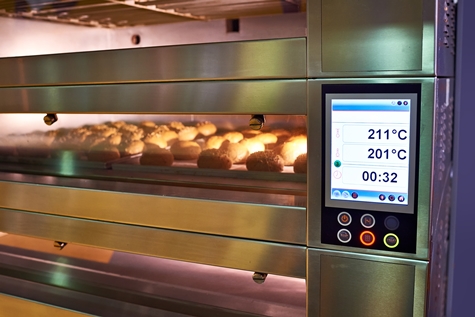Temperature Control and Big Data: How Information Becomes Knowledge
By John Sammon III
The information age has brought on many changes and opportunities for the food industry. The ability to not just receive and react to information in real time, is of course, the initial benefit. And yet now the historical data can be just as beneficial.
In the area of temperature control, communications and information technologies have allowed for many improvements. For example, in the transportation of temperature-controlled products, such as proteins, fresh fruits and vegetables, and frozen foods, real-time data can warn stakeholders of exception-based alarms and alerts. Data trend analysis, over long stretches of time, can yield insights into process improvement opportunities.

Millions of Temperature Points
Food safety temperatures define the critical control points for frozen, fresh and cooked foods, which in turn protect against foodborne illnesses. As a result of HACCP, stakeholders are recording millions upon millions of temperature points for hundreds of different products. These datasets have proven to have more value than the protection against poisoning.
Many companies have begun to trend food safety temperature control data against sales of those products over time. What has been exposed is that undercooked food may be a consumer safety problem, but overcooked food may be a quality problem that affects sales. This has been observed most frequently in chicken that cooked over a critical control point and was then held in a hot holding area waiting to be purchased. The chicken becomes dried out, the sales go down, and product is discarded.
Maximum Performance
What it means is that IoT temperature data can lead to efficiencies across enterprises. Small, battery-operated devices that wirelessly communicate temperature and time continuously are placed in manufacturing, distribution, transportation, back-of-house and front-of-house areas, freezers, coolers, hot hold bins, and on the retail floor. Each location has an ideal temperature profile and the system is set to yield maximum performance throughout the ecosystem.
Peak performance is attainable by using the correct variables, measuring the outputs, testing the assumptions, and repeating the process.
More and more technology has opened doors that assist in the control of variables, such as temperature. Other variables are beyond human control and the best that we can do is adapt to them.
Temperature “control” in and of itself is not of significant value, however. Operations must also monitor time and temperature. This is where information becomes knowledge. Further, the practice of big data analytics requires measurement of inputs and outputs. And this is where knowledge meets understanding.
About the Author
John Sammon III is SVP and GM of SureCheck, and he has a passion for technology solutions that breed operational efficiencies while improving and protecting human health.
In his present role, John helped to develop and now leads SureCheck®, a cloud-based food safety solution. He is also a champion for the use of machine to machine (M2M), Internet of Things (IoT) and mobility solutions to improve global food chain tracking, monitoring, and safety. He works closely with many of the largest food retailers and logistics partners to provide visibility and security of temperature-controlled products.




